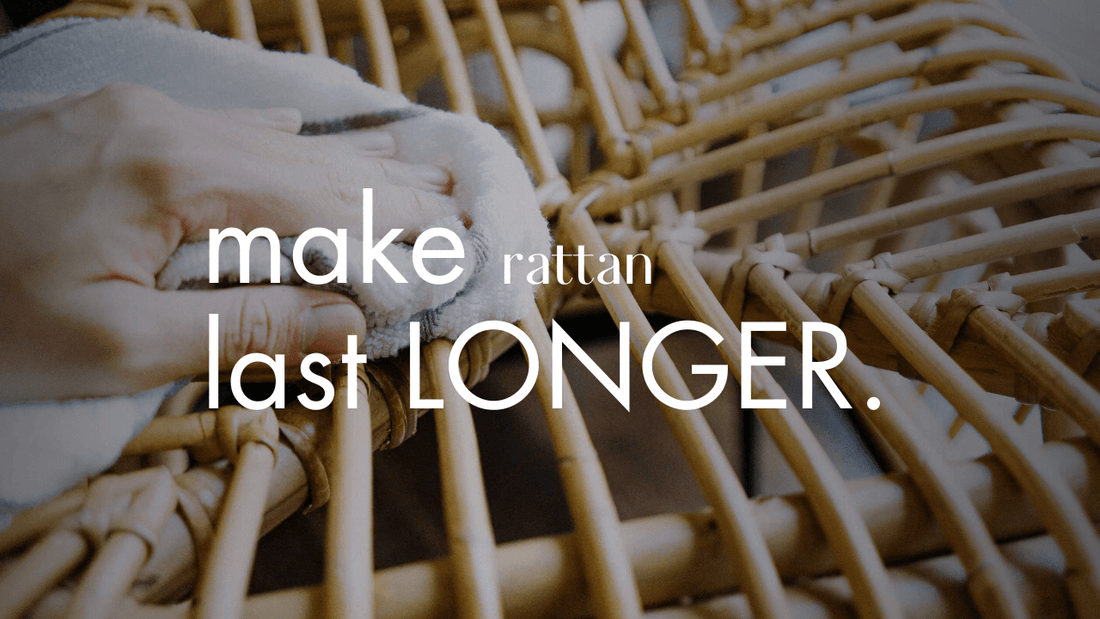Natural Rattan, Bamboo, Kauna & water hyacinth home decor and furniture can be expected to last 20-30 years under normal indoor use. These natural materials are very hardwearing and will last for years with a basic level of maintenance. Expect to replace the cushions every 5-10 years but not your rattan and bamboo furniture. If the handcrafted decor is used outdoors like a balcony, backyard, terrace, or garden, it is advisable to take the home decor inside over the wet & winter months, otherwise, it will inevitably affect the lifespan of those exquisite pieces.
Lets delve into effective techniques for maintaining and protecting your rattan pieces, from meticulous cleaning and maintenance to shielding them from sunlight and moisture.
UDERSTANDING NATURAL FIBERS:
Derived from palm plants, rattan is a versatile sustainable material renowned for its strength and durability. Often used in the creation of furniture, baskets, and decorative items, rattan, bamboo and waterhyacinth’s natural fibers demand specific care to prevent damage and preserve its long-term allure.
PRECAUTIONS BEFORE USE:
Before incorporating rattan furniture into your space, carefully inspect each item for defects or damages. Thoroughly examine for loose or broken weaves, cracks, or structural issues. Addressing these concerns proactively will prevent further harm, allowing you to relish your high quality rattan furniture.
The rattan, bamboo, water hyacinth & kauna planters should not be kept in a wet space or poured water on every day. It is suggested to keep the plants that require less watering so that your planter is not wet all the time.
CLEANING AND MAINTENANCE:
Here’s what you’ll need to clean your rattan furniture:
- Warm water
- Dishwashing liquid
- Boiled linseed or any oil
- Duster
- Vacuum with upholstery brush
- Soft cloth
- Soft-bristled brush
- Two buckets of water to rinse clean
-
Regular Dusting: Embrace the habit of gently dusting your rattan furniture with a soft cloth weekly. This routine practice keeps surface dirt at bay and maintains its polished appearance.
- Gentle Cleaning: If stains or spills occur, act swiftly by using a damp cloth or sponge with a mild detergent solution to delicately cleanse the affected area. Avoid the use of harsh chemicals or abrasive materials that could harm your high quality rattan furniture.
PRESERVERING RATTAN’S INTEGRITY:
- Proper Drying: After cleaning, ensure that rattan furniture is thoroughly dried. While a damp cloth with a mild cleaner can be used, it's crucial not to oversaturate the furniture. If oversaturation occurs, drying it outdoors under the gentle sun is recommended. Take care not to bend the furniture while wet, as the natural plant material will generally return to its original shape.
- Treating Mildew: In the event of mildew or mold formation on the furniture, promptly address the issue to clean the affected areas. Following this, ensure that it is immediately dried outdoors to preserve the high quality rattan furniture.
MAINTENANCE PRACTICES:
-
Vacuuming: Use the brush attachment of your vacuum to clean woven panels and rattan furniture crevices. This gentle approach eliminates dust effectively and keeps your high quality rattan furniture looking pristine.
- Hand Cleaning: For more intricate cleaning, employ a dry brush with medium bristles. By using gentle strokes, you can remove dirt and grime while preserving the integrity of the rattan.
-
Lifting with Care: When moving rattan furniture, lift it instead of dragging to avoid splitting and breaking of the delicate fibers. By handling the furniture gently, you maintain its structural integrity and aesthetic appeal.
- Feet Protection: Safeguard the feet of your cane and rattan furniture by using felt pads or rubber stoppers. These simple additions prevent scratches and provide stability, ensuring your furniture retains its elegance.
Rattan furniture may fade when exposed to strong light, a natural process that need not be considered detrimental. Nonetheless, rotating your furniture regularly helps distribute fading evenly. Installing blinds or awnings can also minimize excessive sun exposure.
Rattan, Bamboo & waterhyacinth natural plant fibers thrive in moderate humidity. Steer clear of areas with intense heat, as it can cause the high quality rattan furniture to dry out. If you reside in an exceptionally dry region, consider employing a humidifier to add moisture to the air.
If excessive dryness has led to splitting, it is crucial to prevent further harm. Treat the rattan or cane with boiled linseed oil to restore moisture and raise the humidity level of the space, allowing the furniture to regain its strength and luster.
Caring for your handcrafted rattan cane furniture is crucial to preserve their beauty and extend their lifespan. By following a few simple steps, such as regular cleaning, protecting them from sunlight and moisture, and handling them with care, you can maintain the allure of your rattan pieces. Whether it's rattan lampshades, bamboo lampshades, rattan trays, rattan baskets, rattan organizers, bamboo trays, bamboo planters, or cane chairs, each item deserves attention and maintenance. By doing so, you can ensure that these exquisite creations continue to enhance the ambiance of your home for years to come, adding a touch of sophistication and inviting charm. Furthermore, by cherishing and preserving these rattan pieces, you can pass down their timeless beauty to future generations, establishing them as a part of your family's heritage. Embrace the art of preserving and caring for these remarkable creations and let them be a testament to your appreciation for craftsmanship and tradition.

